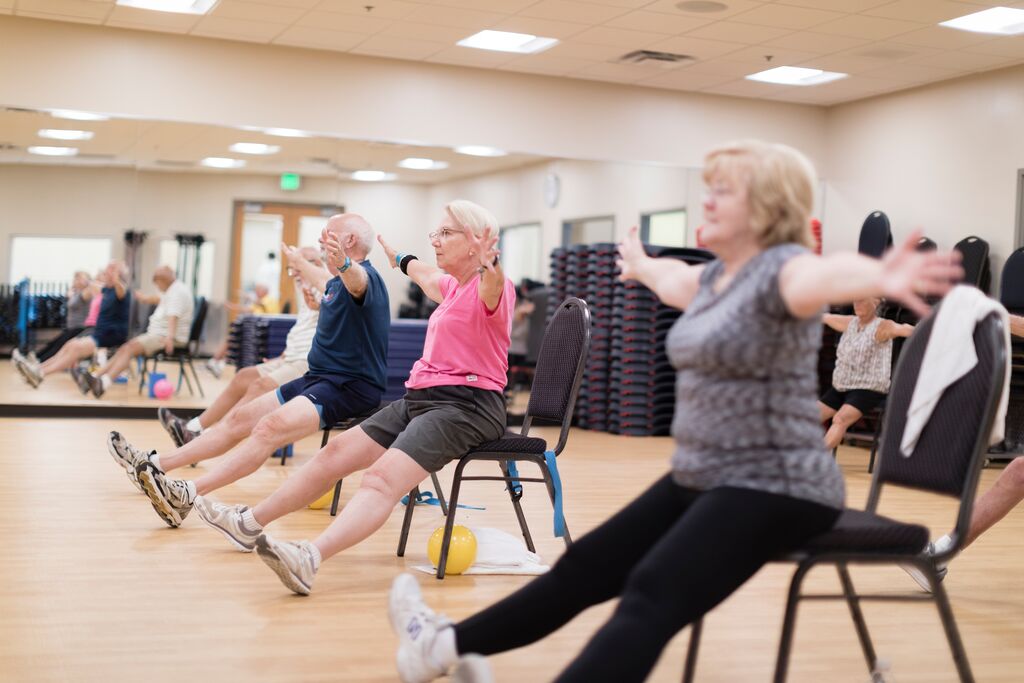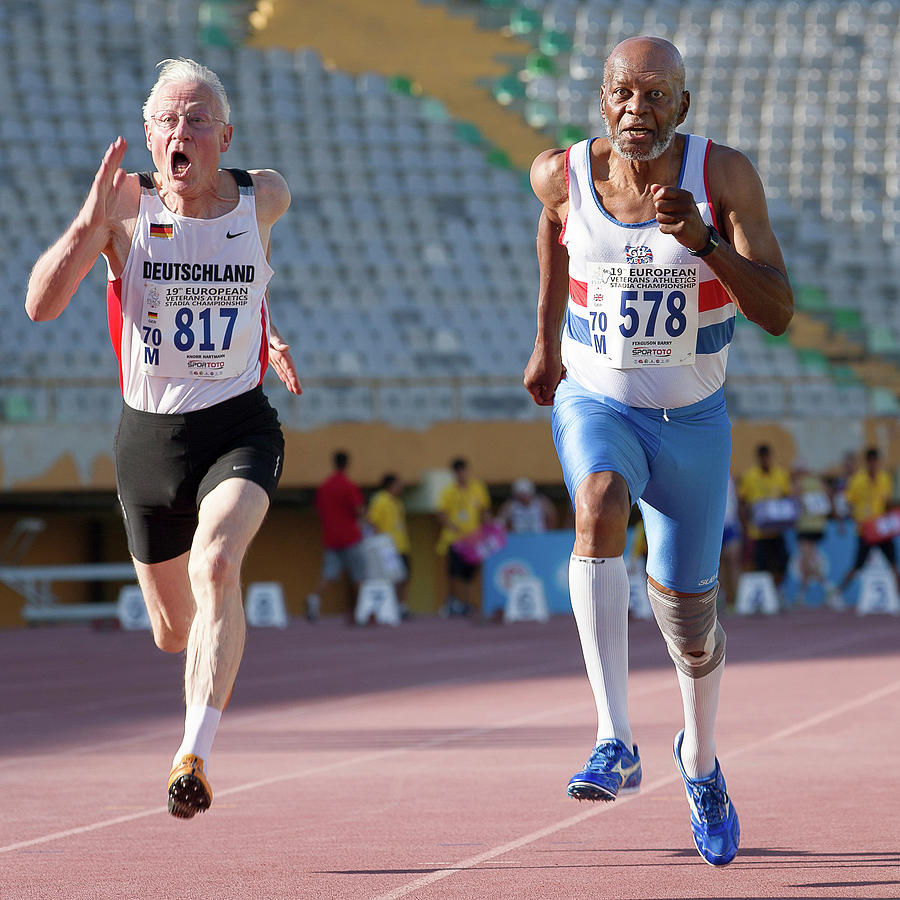6
Section One: The Fundamentals
A) Keywords
Exercise 1:
Provide a brief definition of one of the padlet keywords for this week.
| The period of life after retirement but prior to the onset of substantial physical or cognitive decline is referred to as the “Third Age.” Active aging, personal fulfillment, and chances for leisure, education, and self-improvement are frequently its defining characteristics. Rather than emphasizing independence and vitality, this stage runs counter to previous ideas of old age as a period of decline. |
B) The Social Significance of Aging in Sport
Exercise 2: Notebook Prompt
How is old age popularly represented today? Find an image online that you think exemplifies one defining attitude towards old age and paste in your notebook below with a brief explanation of what this image means to you.

The British Vogue cover with actress Jane Fonda is a noteworthy illustration of how aging is portrayed in modern times. By showcasing an older woman as self-assured, fashionable, and involved in her field, this cover defies conventional stereotypes. It represents a departure from antiquated ideas of aging as a time of decline and a move toward an appreciation of the vitality and significance of older people in society. |
Exercise 3: Notebook Prompt
What does the article (referencing another study by Dionigi) mean by its statement that sport can help aging people to simultaneously “accept and resist the ageing process” (572)? Respond by audio or text and find paste two images sourced online into your notebook showing how sport might help aging people to both accept and resist the aging process.
| Older adults can both accept and fight the aging process by participating in sports and physical activities. They demonstrate acceptance of their changing physical capabilities by engaging in age-appropriate exercise. At the same time, resistance is demonstrated by leading an active lifestyle, which challenges cultural stereotypes that link aging to decline.
Image 1: Group Exercise Class for Older Adults
A group of elderly people taking part in a seated exercise class is shown in this picture. Because these classes are designed to accommodate different levels of mobility, participants can participate in physical activity in a safe manner. By accommodating the needs of the participants and encouraging social interaction and health, this environment exemplifies acceptance. Image 2: Athletes Competing in a Race
Senior athletes are shown here competing and displaying endurance in the middle of a race. Their involvement in these activities embodies resistance to age-related stereotypes and challenges the idea that aging calls for a sedentary lifestyle. Together, these pictures show how older adults can use sports as a way to redefine and negotiate the aging process. |
Exercise 4: Notebook Prompt
Who are the groups less likely to have extensive opportunities to take part in sports, according to Pike? How does privilege factor into aging and sport? (200 words max)
| According to Elizabeth Pike, women, people with disabilities, ethnic minorities, and older adults from lower socioeconomic backgrounds are among the groups that are less likely to have extensive opportunities to participate in sports. These groups frequently encounter systemic obstacles like restricted facility access, budgetary limitations, a lack of transportation, or a lack of culturally relevant programs.
The way that older people view sport is greatly influenced by privilege. Sporting opportunities are more likely to be accessed and benefited by those with greater economic, social, and cultural capital, such as higher income, improved health, or supportive social networks. Richer older adults, for example, can afford personal trainers, gym memberships, and travel to events, while marginalized people might not have any of these options at all. Pike emphasizes how playing sports later in life frequently serves to further establish existing disparities. People who lack the resources or skills to participate may inadvertently be left out of the prevailing narrative of “successful aging” via sport. Because of this, privilege affects not only who is able to engage in physical activity as they age, but also whose aging is viewed as “successful” or valued by society. |
Exercise 5: Padlet Discussion
Why do you think age discrimination is “reported more than any form of prejudice” with older people presented as a threat to social values and interests? Feel welcome to use video in your responses. Paste your comments (or transcript of your video) below!
| I think because age discrimination is so ingrained in popular culture and frequently goes unchecked, it is reported more frequently than other types of prejudice. Ageism is often normalized through jokes, media representations, and even institutional policies, in contrast to other forms of discrimination that are becoming more acknowledged and addressed. It is common to stereotype older people as being weak, uncooperative, or a drain on social services like healthcare and pensions. These misconceptions have the power to quietly influence public opinion, giving the impression that discrimination based on age is acceptable or even justified. Additionally, older adults may be seen as a danger to prevailing social norms, particularly in societies that value creativity, productivity, and youth. People may be perceived by society as socially irrelevant or economically unproductive as they age or need more care, which reinforces the notion that they are “taking up space” or resources. Aging can be viewed as a failure to keep up in a fast-paced, youth-focused society. Because older people are framed as consuming more than they contribute or as impeding progress, it creates a sense of generational tension. In the end, ageism endures because it combines with anxieties about aging, reliance, and change, making it pervasive and challenging to address. |
B) Older Women and Sport
Exercise 6: Notebook Prompt
What differences do you see in these ads? Which one is more inclusive? How is age represented or not represented in each? Answer these questions in your notebook.
| It is clear from examining the two Nike ads, “You Can’t Stop Us” and “This Girl Can – Me Again,” that they both seek to encourage inclusivity in sports, but they take different tacks, especially when it comes to age representation.
Differences in the Ads:
Although both advertisements aim for inclusivity, “This Girl Can – Me Again” portrays age diversity in a more thorough manner. It challenges the idea that fitness is only for young people by showcasing older women who are actively involved in sports. Conversely, despite its strong message of solidarity, Nike’s advertisement does not feature many older athletes, which may ignore the active lives of many older people. Regarding age inclusivity, “This Girl Can – Me Again” does a better job of presenting sports as approachable and pertinent to women of all ages. In addition to empowering older women, showcasing their involvement sets the stage for future campaigns that support age diversity in sports representation. |
Exercise 7: Notebook Prompt
In her article, “Assessing the sociology of sport: On age and ability,” Elizabeth Pike references a “trend towards a ‘feminisation of ageing’, with many women living longer than men” (573). Do you agree that aging has been “feminized” in this way? How? Answer these questions in your notebook.
| Yes, I agree that, as Elizabeth Pike points out, aging has been “feminized” in some significant ways. This concept encompasses the way aging is framed and experienced in culture as well as demographic trends. The older population is primarily female because, statistically speaking, women typically outlive men. This influences how society views and depicts aging, frequently in ways that support gendered norms.
For instance, older women are often subjected to harsher criticism for aging-related traits like wrinkles or grey hair, and they are under pressure to “age gracefully,” which usually means keeping up a youthful appearance. Women are far more frequently targeted by the anti-aging industry—which includes skin care, cosmetic surgery, and wellness—than men, which perpetuates the notion that aging is something that women must conceal or manage. On the other hand, older men are frequently allowed to age more “naturally” in society without facing the same scrutiny. However, older women may also be stereotyped as invisible or dependent, especially if they do not fit the mould of ideals of productivity, activity, or beauty. By portraying their aging bodies and experiences as issues that need to be resolved rather than as normal and worthwhile stages of life, this feminization of aging has the potential to marginalize older women. Therefore, it is true that aging has been feminized in both statistical and social contexts, and this raises significant issues regarding the intersections of gender, age, and value. |
Section Three: Module Mini Assignment
|
|



